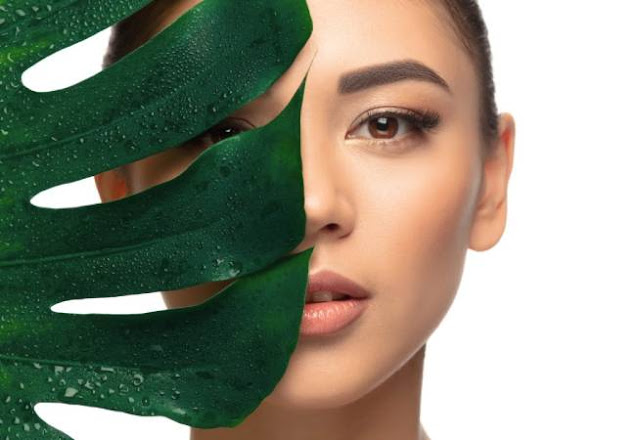Featured
- Get link
- X
- Other Apps
What Is The Difference Between Blue Beauty and Green Beauty?
Blue beauty and green beauty are terms that have emerged in the beauty and skincare industry to denote different approaches and philosophies towards sustainability, environmental consciousness, and overall well-being. While both concepts share the goal of promoting eco-friendly practices within the beauty industry, they focus on distinct aspects and principles. Let's delve into the key differences between blue beauty and green beauty.
Blue Beauty: A Dive into Oceanic Sustainability
Blue beauty is a relatively recent concept that specifically
addresses the impact of the beauty industry on the health of the world's
oceans. This approach recognizes the interconnectedness of the beauty industry
with marine ecosystems and aims to minimize its negative effects on the oceans.
The term "blue" refers to the vast expanse of water on our planet.
1. Ingredient Sourcing:
Blue beauty emphasizes responsibly sourcing ingredients from
the oceans. This involves ensuring that the extraction of marine-derived
components is sustainable, avoiding overexploitation that could harm marine
ecosystems.
2. Banning Harmful Chemicals:
To protect aquatic life, blue beauty advocates for the
elimination of harmful chemicals from beauty products. This includes avoiding
ingredients like oxybenzone and octinoxate in sunscreens, which have been
linked to coral bleaching.
3. Packaging Innovation:
Blue beauty encourages the use of environmentally friendly
packaging, with a focus on reducing plastic pollution in the oceans. Brands
adopting blue beauty principles might opt for biodegradable materials or
promote reusable packaging.
4. Ocean Conservation Initiatives:
Brands committed to blue beauty often engage in or support
ocean conservation initiatives. This can involve partnerships with
organizations working to protect marine life, restore coral reefs, or combat
plastic pollution.
5. Consumer Education:
Blue beauty emphasizes the importance of consumer education.
Brands and advocates aim to raise awareness about the impact of beauty products
on marine ecosystems, encouraging consumers to make more informed and
sustainable choices.
Green Beauty: Holistic Environmental Consciousness
On the other hand, green beauty is a broader concept that
encompasses a more holistic approach to environmental sustainability in the
beauty industry. While it includes considerations for oceans, it extends its
focus to land ecosystems, biodiversity, and overall environmental impact.
1. Clean and Natural Ingredients:
Green beauty promotes the use of clean and natural
ingredients in skincare and cosmetic products. This involves avoiding synthetic
chemicals, parabens, sulfates, and other potentially harmful substances.
2. Sustainable Sourcing:
Similar to blue beauty, green beauty emphasizes responsible
ingredient sourcing. This includes ensuring fair labor practices, supporting
local communities, and using agricultural practices that minimize environmental
impact.
3. Cruelty-Free Practices:
Green beauty advocates for cruelty-free practices, opposing
animal testing. Brands following green beauty principles often seek
certification from cruelty-free organizations and use alternatives to animal
testing.
4. Eco-Friendly Packaging:
Packaging is a significant focus in green beauty, with an
emphasis on reducing waste and environmental impact. This can involve using
recycled materials, designing packaging for easy recycling, or adopting
minimalist packaging approaches.
5. Carbon Footprint Reduction:
Green beauty brands often strive to minimize their carbon
footprint. This includes using renewable energy sources, optimizing
transportation and distribution processes, and overall reducing the
environmental impact of the entire product lifecycle. Within the Green Beauty
movement, a key focus is minimizing the carbon footprint associated with beauty
product manufacturing and distribution. Brands strive to use renewable energy,
optimize transportation processes, and implement sustainable practices to
reduce their overall environmental impact and contribute to a more eco-friendly
industry.
What is the Green beauty movement?
The Green Beauty movement is a conscientious shift within
the beauty and skincare industry towards sustainability, environmental
responsibility, and overall wellness. This movement prioritizes clean, natural,
and ethically sourced ingredients while advocating for eco-friendly practices
throughout the entire product lifecycle. Green beauty aims to reduce the
environmental impact of beauty products by avoiding harmful chemicals,
promoting cruelty-free practices, and adopting sustainable packaging.
Central to the Green Beauty movement is the rejection of
synthetic additives like parabens, sulfates, and phthalates, in favor of
plant-based and natural ingredients. Brands aligned with this movement often
emphasize transparency, providing consumers with clear information about the
sourcing and composition of their products.
Furthermore, the Green Beauty movement encourages a holistic
approach, considering the social and ethical aspects of beauty production. This
involves fair labor practices, supporting local communities, and minimizing the
carbon footprint associated with manufacturing and distribution. As consumers
become increasingly conscious of their ecological footprint, the Green Beauty
movement reflects a growing demand for products that prioritize both personal
well-being and environmental health.
Conclusion:
Choosing Between Blue and Green Beauty
In essence, while blue beauty zooms in on the specific
challenges posed by the beauty industry to marine ecosystems, green beauty
takes a more comprehensive approach, considering the broader environmental
implications. Both concepts underscore the importance of sustainable practices,
ethical sourcing, and consumer awareness, offering consumers choices aligned
with their values. Ultimately, the choice between blue and green beauty may
depend on individual priorities and concerns, but the overarching goal remains
the same – to create a beauty industry that respects and preserves the planet
for future generations.
- Get link
- X
- Other Apps
Popular Posts
How to pick the best sunscreen in 2023 if you have acne
- Get link
- X
- Other Apps


Comments
Post a Comment